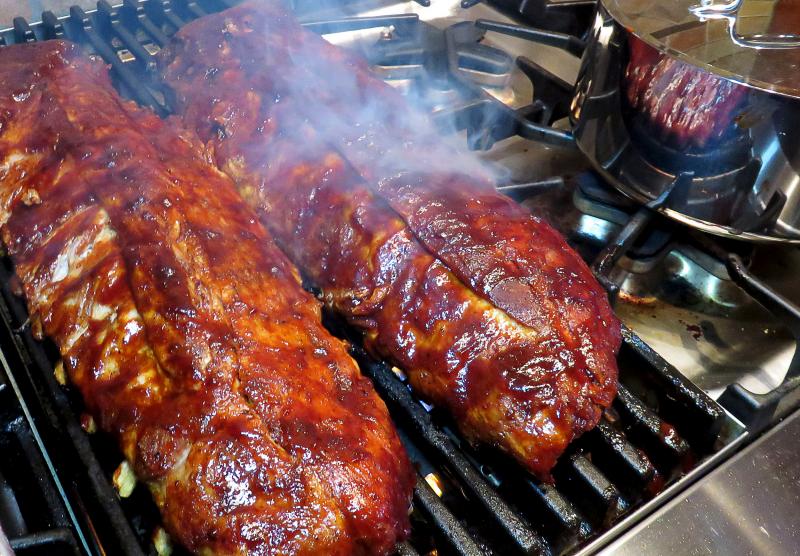Skilled operators keep the business of eating up to par
Many of the subjects I write about here in the Cape Gazette or talk about on the radio were learned the hard way, from day-to-day experiences in restaurants that I either owned or in which I was a partner. “This is not a drill,” I used to tell my staff during lineups. “We are professionals, and this is the big time!” As they giggled, it would cross my mind that those words applied more to me than it ever would to them. My successes (and failures) had a direct impact on my bank account. The employees could quit and walk out if they wanted to. If I walked out, I’d go to jail. Now there’s an incentive to learn quickly.
I’ll never forget opening day at my most recent eatery. One of our specialties was barbecued ribs. Long story short, barely 90 minutes into our first dinner service, we ran out. Now if it had been french fries or hamburgers, I would have sent one of the bussers to the grocery store, and we’d be dishin’ up fries and burgers in no time. But not ribs. We smoked our ribs for 12 hours. It seemed unreasonable to ask a party of six to wait 12 hours for their orders. I was embarrassed. And that’s when I learned about pars.
This necessary yet woefully inexact science is the process whereby a restaurant orders enough product to meet its customers’ daily requests, but avoids ordering so much as to create waste and send food costs sky high. In golf, the term par specifies the predetermined number of strokes that a player should make to complete a round. That number is based on the distance from the tee to the hole, the terrain and other contributing factors. In restaurant lingo, par is the predetermined amount of product that a restaurant should have on hand to complete a successful service. The number is based on sales history and weather for that day, and other contributing factors such as holidays, etc. If you shoot below par in golf, you’re a hero. But that’s where the analogy breaks down: I was not a hero during that ribless dinner service.
Tracking inventory is one of the most important processes in restaurant operation. Fans of Food Network’s “Restaurant: Impossible” see it over and over: More often than not, Chef Robert Irvine drags a failing owner into the walk-in and points to boxes and boxes of inventory - much of it already out of date. “There’s your money!” he tells them. And one of the fixes he puts into place is a smaller menu that requires less perishable food to be kept on hand.
One of my very first columns here in the Cape Gazette was an in-depth commentary on how Ruth’s Chris Steakhouse, a fine-dining franchise, maintained the day-to-day quality of food and service that justified its fine-dining prices. My interview in West Ocean City was on a Tuesday with general manager Basil Hanlon. During our kitchen walk-through, he pointed to a wall that was covered in clipboards. Each clipboard contained par sheets for Tuesday of last week, the Tuesdays contained in the previous month - and for every other month going back for several years. The sheets recorded the weather for that day and exactly how much of each menu item was sold on that day. Each day had its own set of sheets. Those entries were averaged out to give the executive chef some idea of how many New York strips, tomatoes or cheesecakes he or she might possibly need for next Tuesday. Or Wednesday. Or Sunday. You get the idea.
Armed with that information, he or she had a guideline to adjust food orders, delivery schedules and average inventory based on the history of customer demand. The longer a restaurant is in business, the more accurate this system becomes as the averages finally become a trend. In my defense, though I did have barbecue sauce on my face when we ran out of ribs, it was our very first day open. Not much history to track.
There are, of course, situations where pars might be exceeded. Here at the beach it would certainly be 4th of July weekend, Sea Witch weekend, Jazz Festival, Memorial Day, Labor Day, etc., etc. To compound this educated guessing game, delivery delays can wreak havoc when weekends and holidays get in the way. Those extra ribs you ordered won’t do you any good if they’re still on the highway in an 18-wheel reefer. So a proactive owner, manager or chef will often stock up on additional inventory in anticipation of these situations.
Nowadays there are computer programs that take much of the drudgery out of maintaining sensible inventory. Point-of-sale computer systems, if properly set up and programmed, can compare sales for each individual item or ingredient to similar days in the past. This becomes especially useful when a menu item contains a number of ingredients. A big salad, for example, might involve ingredients ordered from seven different purveyors, each in different weights and quantities. If the software is programmed to know exactly how much carrot, celery, blue cheese, romaine, cucumber, grape tomatoes, croutons, sunflower seeds, red peppers, bean sprouts and avocado (not to mention the ingredients in the dressing) goes into each big salad, then every time a server sends an order to the kitchen, the system adds that exact amount to the upcoming order, along with the day and time it was ordered.
Careful attention to pars is a big step toward helping a restaurant run at optimal profit. Recently I had the pleasure of getting up close and personal with the complex and very math-centered systems used by our local SoDel Concepts restaurant group. Several hundred employees and their families depend on systems such as these to help ensure they have a job the next day. In fact, any consistently good restaurant operation will have similar systems in place - either computer-based or on clipboards tacked to the wall - to reduce spoilage and food waste that can negatively impact the all-important food costs.
It’s details like these that make me frown when somebody says, “Aunt Murlene makes really good chili! We think she should open a restaurant!” Unless Aunt Murlene is independently wealthy, she’ll need to learn the necessary behind-the-scenes procedures that well-run restaurants employ to stay in business. In the words of Paula Deen, “It ain’t all about the cookin’!”





















































